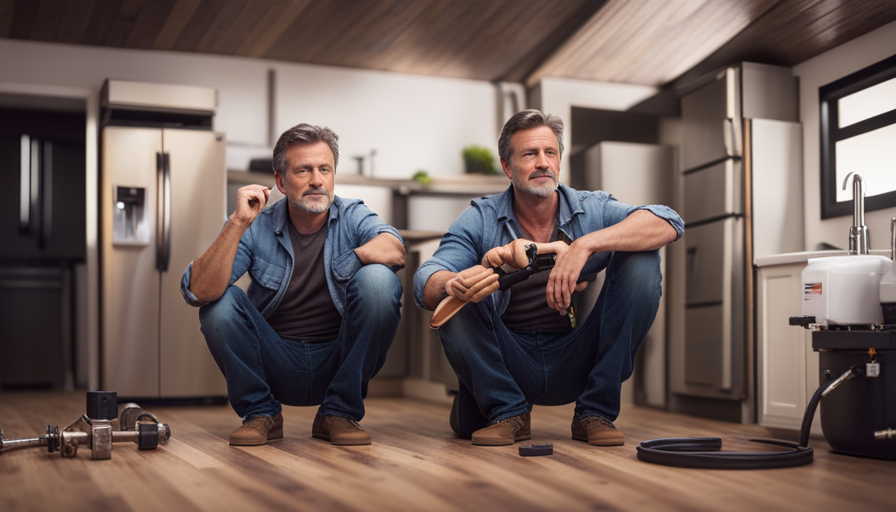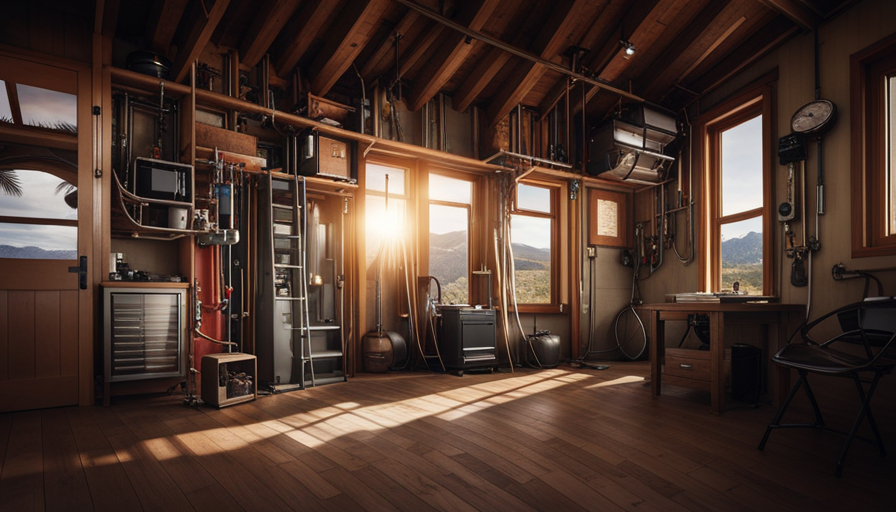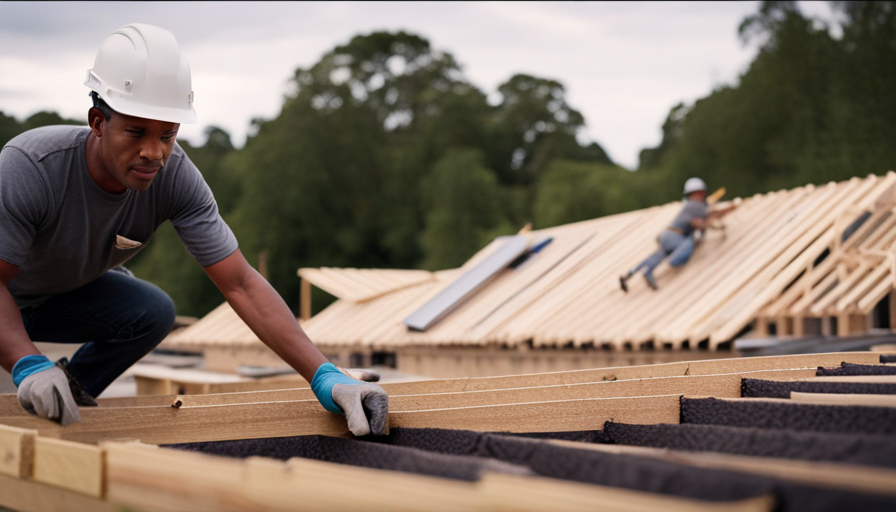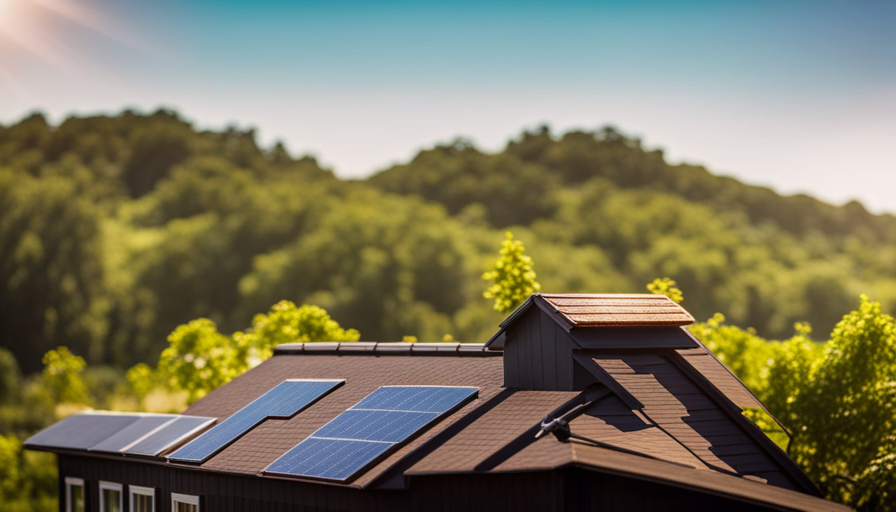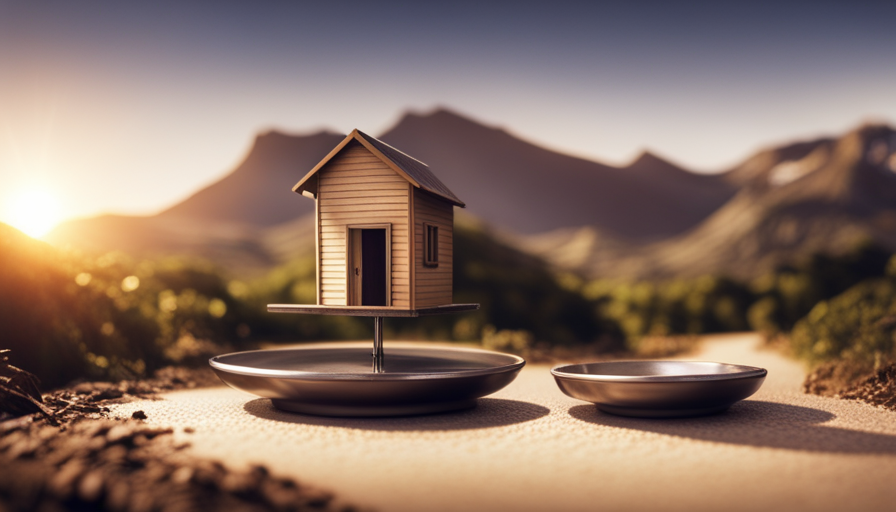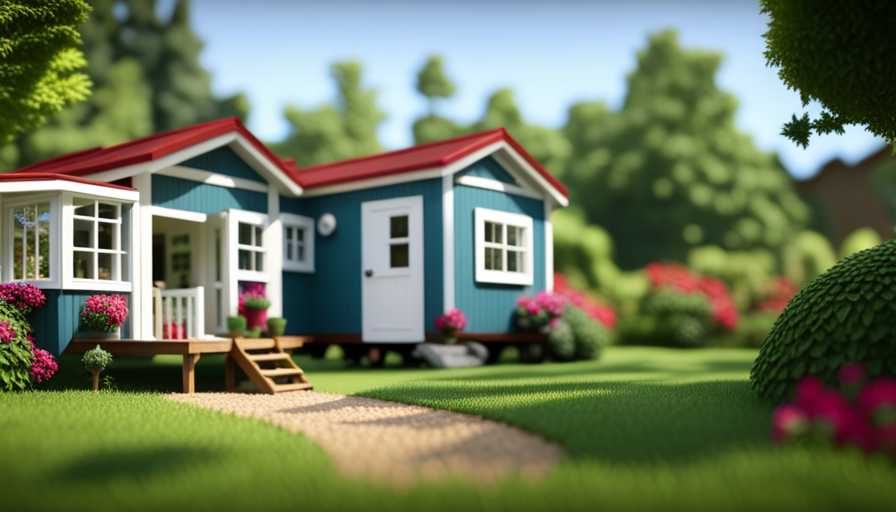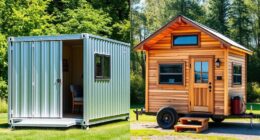Against the backdrop of large estates and tall buildings, the small tiny home represents a minimalist lifestyle. But how does such a compact space manage to meet all plumbing needs?
In this article, I will delve into the intricacies of tiny house plumbing and unveil the secrets behind its functionality. From selecting the appropriate plumbing system to incorporating space-saving fixtures, every aspect of tiny house plumbing requires careful consideration.
We will explore the installation of tankless water heaters, which provide on-demand hot water without taking up excessive space. Furthermore, I will guide you through the design of a functional bathroom in a limited area, maximizing every inch of space without compromising comfort.
Sustainability is also a key aspect of tiny house living, and I will reveal the benefits of incorporating greywater systems to minimize water wastage. Additionally, proper ventilation and drainage systems are crucial to maintaining a healthy living environment, and I will share tips on how to ensure their efficacy in a tiny house.
Whether you are considering a professional installation or embarking on a DIY project, I will outline the pros and cons of each approach. Join me on this journey to unravel the wonders of tiny house plumbing and discover how this ingenious system supports a life of simplicity and efficiency.
Key Takeaways
- Tiny houses have limited space, so careful plumbing consideration is necessary to maximize every inch without sacrificing comfort.
- There are different types of plumbing systems for tiny houses, including traditional plumbing systems, composting toilets, and off-grid plumbing systems.
- Water-saving measures such as low-flow fixtures and water-saving appliances can help reduce water waste in tiny houses.
- Tankless water heaters are popular in tiny houses due to their compact size, on-demand hot water, and energy efficiency.
Understanding the Basics of Tiny House Plumbing
Get ready to dive into the fascinating world of tiny house plumbing! When it comes to plumbing in a tiny house, understanding the basics is crucial.
One important aspect is choosing the right plumbing materials. Since space is limited in a tiny house, it’s essential to select materials that are compact yet durable. PEX (cross-linked polyethylene) tubing is a popular choice for water supply lines due to its flexibility and resistance to freezing. PVC (polyvinyl chloride) pipes are commonly used for drain lines because they’re lightweight and easy to install.
Another key consideration is understanding water pressure in a tiny house. Unlike traditional houses, tiny houses often rely on a water pump or a gravity-fed system for water supply. It’s important to calculate the water pressure needed for your fixtures and appliances to ensure proper functioning. This can be achieved by using a pressure regulator or a flow restrictor.
Now that you have a grasp on the basics of tiny house plumbing, let’s move on to the next section about choosing the right plumbing system for your tiny house.
Choosing the Right Plumbing System for Your Tiny House
When it comes to setting up the plumbing in your cozy abode, you’ll want to carefully consider which system is best suited for your specific needs. Choosing the right plumbing system for your tiny house is crucial in ensuring functionality and efficiency. There are several factors to take into account, such as space constraints, the availability of resources, and your budget.
One option is to opt for a traditional plumbing system, which includes a septic tank or connection to a municipal sewer line. This system allows for the use of standard fixtures and appliances, but it can be costly and may require regular maintenance. Another option is a composting toilet, which is an eco-friendly alternative that eliminates the need for water and sewage connections. However, it may not be suitable for everyone’s preferences.
To help you make an informed decision, consider the following table:
| Plumbing System | Pros | Cons |
|---|---|---|
| Traditional | Familiar fixtures | Expensive and requires maintenance |
| Composting | Eco-friendly | May not suit everyone’s preferences |
| Off-grid | Self-sufficient | Limited water supply |
When choosing eco-friendly materials, consider using low-flow fixtures and water-saving appliances to reduce water waste. Additionally, explore cost-effective plumbing options such as PEX pipes, which are durable and easy to install.
In the next section, we will delve into the process of installing a tankless water heater, a popular choice for tiny houses due to its compact size and energy efficiency.
Installing a Tankless Water Heater
Installing a tankless water heater offers a compact and energy-efficient solution for providing hot water in your cozy abode. These innovative devices have become increasingly popular in tiny houses due to their numerous benefits.
One advantage of a tankless water heater is its small size, making it perfect for a limited space. Unlike traditional water heaters, which require a bulky tank, tankless water heaters are sleek and can be mounted on a wall, saving valuable floor space.
The installation process for a tankless water heater is relatively straightforward. First, you need to determine the appropriate location for the unit, considering factors such as ventilation and accessibility. Next, you will need to connect the water supply lines to the heater, ensuring proper flow and pressure. It’s crucial to follow the manufacturer’s instructions carefully to avoid any issues.
Once the tankless water heater is installed, you can enjoy a continuous supply of hot water without the need for a storage tank. These devices heat the water as it passes through, eliminating the need to wait for a tank to heat up. Additionally, tankless water heaters are energy-efficient, as they only use energy when hot water is needed, resulting in lower utility bills.
With the tankless water heater successfully installed, it’s time to move on to designing a functional bathroom in your tiny space, maximizing every inch without compromising comfort or convenience.
Designing a Functional Bathroom in a Tiny Space
To make the most of your limited space, you’ll need to carefully design a functional bathroom that maximizes every inch without sacrificing comfort or convenience. When it comes to designing a compact shower space, here are four key considerations:
-
Utilize a corner shower: By placing the shower in a corner, you can make the most of the available space. Look for a compact shower unit that fits snugly into the corner, saving valuable floor space.
-
Opt for a sliding door: Traditional swing-out shower doors can take up a significant amount of space. Instead, choose a sliding door that glides along a track, allowing for easy access without encroaching on the limited bathroom space.
-
Install wall-mounted storage: In a tiny bathroom, storage is crucial. Consider installing wall-mounted shelves or cabinets to maximize storage space without taking up valuable floor area.
-
Use vertical space: When storage space is at a premium, don’t forget to utilize the vertical space in your bathroom. Install shelves or hooks on the walls to keep towels and toiletries easily accessible and organized.
By designing a compact shower space and maximizing storage in a small bathroom, you can create a functional and efficient bathroom in your tiny house. Next, we’ll explore how to utilize space-saving plumbing fixtures to further optimize your bathroom’s layout.
Utilizing Space-Saving Plumbing Fixtures
Maximizing your bathroom’s layout with space-saving plumbing fixtures can transform your tiny space into a functional oasis. In a tiny house, every square inch counts, so it’s essential to choose plumbing fixtures that not only save space but also maximize water efficiency.
One space-saving plumbing fixture that works well in tiny houses is a corner sink. By positioning the sink in the corner, it frees up valuable wall space for other bathroom essentials. Additionally, opting for a wall-mounted faucet can save even more space and add a sleek, modern look to your bathroom.
Another option to consider is a compact toilet with a built-in sink. These innovative fixtures have a small sink on top of the toilet tank, allowing you to wash your hands and reuse the water for flushing. This dual-functionality not only saves space but also reduces water waste.
To further maximize water efficiency, you can install a low-flow showerhead and faucet aerators. These fixtures limit the amount of water used without sacrificing water pressure, ensuring that you have a comfortable shower experience while conserving water.
In the next section, we will explore composting toilets for tiny houses, which offer an eco-friendly alternative to traditional flushing toilets. Transitioning to composting toilets can be a game-changer in minimizing water usage and maintaining a sustainable lifestyle in your tiny house.
Exploring Composting Toilets for Tiny Houses
Transitioning to composting toilets can be a real game-changer for creating a more sustainable and environmentally-friendly bathroom experience in your tiny oasis. Composting toilets are an excellent alternative to traditional flush toilets, as they reduce water consumption and eliminate the need for a sewage system. These toilets work by breaking down human waste into compost, which can be used as fertilizer for plants.
To give you a better understanding of the benefits and considerations of composting toilets, let’s take a look at the following table:
| Pros | Cons | Alternatives |
|---|---|---|
| Environmentally-friendly | Requires regular maintenance | Incinerating toilets |
| Reduces water consumption | May produce odors | Vermicomposting toilets |
| Produces nutrient-rich compost | Requires space for composting pile | Self-contained composting toilets |
Composting toilets offer several advantages, such as being environmentally-friendly and reducing water consumption. However, they do require regular maintenance to ensure proper functioning and may produce odors if not managed correctly. If composting toilets don’t suit your preferences or requirements, there are alternatives available, such as incinerating toilets, vermicomposting toilets, and self-contained composting toilets.
Incorporating greywater systems for sustainable living is another crucial aspect to consider when designing a tiny house.
Incorporating Greywater Systems for Sustainable Living
Consider incorporating greywater systems for sustainable living in your tiny oasis, as they can significantly reduce water waste and contribute to a more eco-friendly lifestyle. One of the key benefits of greywater systems is their ability to utilize and recycle water that would otherwise go to waste. By diverting water from sinks, showers, and laundry, you can collect and treat it for reuse in irrigation, toilet flushing, and other non-potable purposes. This not only conserves water but also reduces the strain on local water sources.
In addition to greywater systems, another sustainable solution for your tiny house is rainwater harvesting. By collecting rainwater from your roof, you can store and use it for various purposes, such as watering plants or even for household use after proper filtration. Rainwater harvesting reduces the demand for treated water and helps conserve this precious resource.
Furthermore, incorporating solar-powered water heating systems in your tiny house can further enhance its sustainability. By harnessing the power of the sun, these systems can heat water efficiently and reduce the reliance on traditional energy sources. Solar water heaters are cost-effective and environmentally friendly, making them an ideal addition to any tiny house.
By implementing these sustainable practices, you can create a more self-sufficient and eco-friendly living space. However, it’s important to ensure proper ventilation and drainage in your tiny house to maintain a healthy indoor environment.
Transitioning into the next section, let’s explore the importance of proper ventilation and drainage for a tiny house.
Ensuring Proper Ventilation and Drainage in a Tiny House
To ensure your tiny oasis remains comfortable and dry, it’s crucial to prioritize proper ventilation and drainage. Studies show that good indoor air quality can improve overall well-being and productivity. In a tiny house, where space is limited, it becomes even more important to design an effective ventilation system that can adequately remove moisture, odors, and pollutants.
Here are three key considerations for ensuring proper ventilation and drainage in your tiny house:
-
Install a mechanical ventilation system: Due to the limited space, natural ventilation may not be sufficient. A mechanical ventilation system, such as an energy recovery ventilator or a heat recovery ventilator, can help exchange stale indoor air with fresh outdoor air while maintaining energy efficiency.
-
Comply with plumbing regulations: When it comes to drainage, it’s essential to follow local plumbing regulations. This includes properly sizing drainpipes, installing traps, and venting systems to prevent odors and ensure proper drainage flow.
-
Consider passive ventilation strategies: In addition to mechanical ventilation, incorporating passive ventilation strategies can enhance air circulation. This can be achieved through strategically placed windows, skylights, or vents to facilitate cross-ventilation and minimize the need for mechanical systems.
By addressing these considerations, your tiny house can maintain a comfortable and healthy living environment.
Moving on to maintenance and troubleshooting tips for tiny house plumbing, it’s important to…
Maintenance and Troubleshooting Tips for Tiny House Plumbing
Ensuring the proper maintenance and troubleshooting of plumbing systems in a compact living space is vital for a seamless and stress-free tiny house living experience. When it comes to maintaining your tiny house plumbing, there are a few key tips to keep in mind.
Firstly, regular inspection is crucial. Check for any leaks, drips, or unusual noises in the pipes. This will help you catch any potential issues before they become major problems. Additionally, make sure to keep your plumbing system clean by using environmentally friendly cleaning products and avoiding harsh chemicals that can damage the pipes.
Another important maintenance tip is to know the location of your water shut-off valve. In case of an emergency or a leak, being able to quickly shut off the water supply can save you from significant damage. It’s also a good idea to regularly clean your drains to prevent clogs. Use a drain snake or a natural drain cleaner to keep the pipes clear and flowing smoothly.
When it comes to troubleshooting, one common issue in tiny houses is low water pressure. This can be caused by various factors, such as a clogged aerator or a problem with the water pump. By identifying the source of the problem, you can take the necessary steps to fix it.
Proper maintenance and troubleshooting techniques are essential for the smooth functioning of your tiny house plumbing. By following these tips, you can avoid major issues and enjoy a hassle-free living experience. Transitioning into the subsequent section, it’s important to weigh the pros and cons of hiring a professional or doing the plumbing installation yourself.
Hiring a Professional or DIY: Pros and Cons of Plumbing Installation in a Tiny House
Hiring a professional for your plumbing installation can save you time, money, and the headache of potential DIY mishaps. When it comes to setting up the plumbing in a tiny house, there are several factors to consider.
While some individuals may feel confident in their DIY skills, it is important to weigh the pros and cons before making a decision.
One of the main advantages of hiring a professional is their expertise and experience in plumbing installations. They have the knowledge to ensure that everything is done correctly, from connecting the water supply to installing the appropriate pipes and fixtures. Additionally, a professional plumber will have access to specialized tools and equipment that may be necessary for the job.
Another benefit of hiring a professional is that they can provide guidance and advice throughout the process. They can help you determine the best layout for your plumbing system, taking into account factors such as space constraints and water pressure requirements. This level of expertise can help prevent future issues and costly repairs.
However, it is worth noting that hiring a professional can be more expensive compared to a DIY approach. This cost includes not only their labor but also the materials and any permits that may be required. Additionally, scheduling and coordinating with a professional plumber may take some time, which could delay your overall project timeline.
Ultimately, the decision to hire a professional or tackle the plumbing installation yourself depends on your level of expertise, available time, and budget. It is important to carefully weigh the pros and cons before making a final decision to ensure a successful and efficient plumbing installation in your tiny house.
Frequently Asked Questions
What are the benefits of using a tankless water heater in a tiny house?
As an expert in energy efficient plumbing solutions for small homes, I can confidently say that using a tankless water heater in a tiny house offers numerous benefits. Firstly, it provides on-demand hot water, eliminating the need for a large storage tank. This saves space and reduces energy consumption.
Additionally, tankless water heaters are highly efficient, resulting in lower utility bills. Their compact size also makes them ideal for tiny houses with limited space.
Ultimately, incorporating a tankless water heater is a wise choice for any tiny house owner seeking an efficient and space-saving plumbing solution.
Can I use regular-sized plumbing fixtures in a tiny house?
Regular-sized plumbing fixtures may not be suitable for tiny houses due to their size and space requirements. However, there are space-saving plumbing fixtures specifically designed for tiny houses. These fixtures are compact and efficient, allowing you to make the most of the limited space available.
Additionally, alternative plumbing options such as composting toilets and compact water heaters can further optimize small living spaces. By utilizing these specialized fixtures and options, you can ensure a functional and comfortable plumbing system in your tiny house.
How does a greywater system work and how can it be incorporated into a tiny house?
A greywater system is a sustainable way to recycle water in a tiny house. It involves collecting and treating wastewater from sources like sinks and showers, and then reusing it for purposes such as irrigation or flushing toilets.
To incorporate a greywater system into a tiny house, a DIY plumbing installation can be done. This involves connecting the greywater outlets to a filtration system and storage tanks, and then routing the treated water to the desired end-use locations.
What are some common maintenance issues that can arise with tiny house plumbing?
Maintenance issues with tiny house plumbing can be a real headache. Common problems include clogged drains, leaky pipes, and malfunctioning water heaters. These issues can disrupt daily activities and cause significant damage if not addressed promptly. Symbolically, they represent the challenges that come with living in a small space.
To combat these problems, regular inspections and preventive measures like using drain screens and water softeners are essential. Additionally, having a professional plumber on speed dial can save you from a world of plumbing woes.
What are the advantages and disadvantages of hiring a professional versus doing the plumbing installation myself in a tiny house?
There are both advantages and disadvantages to hiring a professional versus doing the plumbing installation myself in a tiny house.
One advantage of hiring a professional is their expertise and experience in plumbing systems, ensuring a proper and efficient installation. They can also handle any potential issues or complications that may arise during the process.
However, the disadvantage is the cost associated with hiring a professional, as it can be quite expensive compared to doing it myself.
Additionally, by doing it myself, I have the flexibility to customize the plumbing layout according to my specific needs and preferences.
However, the disadvantage is that I need to have a certain level of technical knowledge and skills to ensure a successful installation.
Conclusion
In conclusion, plumbing in a tiny house is like weaving a delicate tapestry of pipes and fixtures, creating a masterpiece of functionality in a limited space. From choosing the right plumbing system to installing a tankless water heater, every step is crucial in ensuring a smooth flow of water and waste.
Designing a functional bathroom with space-saving fixtures and incorporating greywater systems adds a touch of sustainability. Proper ventilation and drainage are essential for the health of your tiny abode.
Whether you hire a professional or embark on a DIY journey, remember to maintain and troubleshoot your plumbing system regularly. So, let the symphony of water dance through your tiny home, creating a harmonious and efficient oasis.
Hi, I’m Emma. I’m the Editor in Chief of Tiny House 43, a blog all about tiny houses. While tree houses are often associated with childhood, they can be the perfect adult retreat. They offer a cozy space to relax and unwind, surrounded by nature. And since they’re typically built on stilts or raised platforms, they offer stunning views that traditional homes simply can’t match. If you’re looking for a unique and romantic getaway, a tree house tiny house might just be the perfect option.
